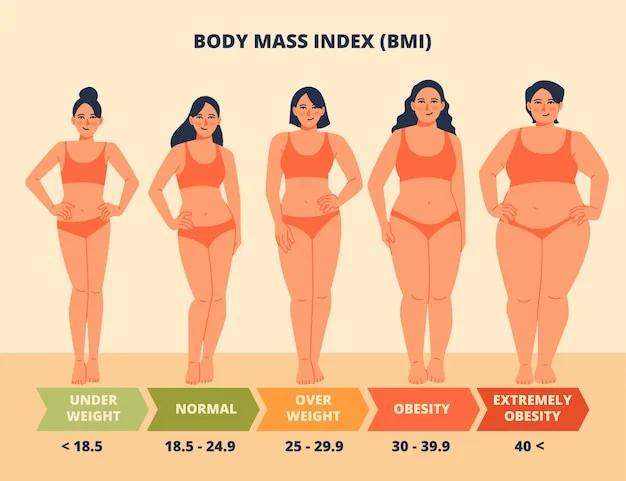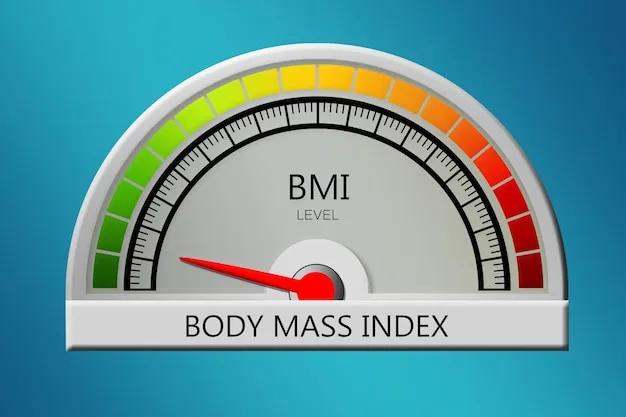Body Mass Index (BMI) is a widely used measure to assess an individual’s weight status. It has become a standard tool in healthcare and public health settings for evaluating disease risk of various health conditions associated with body weight. However, the history and development of BMI reveal some interesting insights into its limitations and controversies. In this article, we will delve into the evolution of BMI, from its inception to its current status as a widely accepted measure. We will explore the origins of BMI, its scientific foundations, and the criticisms it has faced over the years.
The origins of BMI
The concept of BMI can be traced back to the 19th century when a Belgian mathematician named Adolphe Quetelet developed a formula to measure the degree of obesity and whether a person has a healthy weight in the general population. Quetelet’s formula, known as the Quetelet Index, was based on the ratio of a person’s weight to the square of their height. It was not initially intended to assess individual fatness but rather to provide a quick and easy way to measure obesity levels in a population for resource allocation purposes.
The scientific foundations of BMI
Despite its origins as a population-level measure, BMI gained popularity over time as a tool to assess individual weight status. The acceptance of the BMI allowed researchers, epidemiologists and doctors to conduct cheap and easy measurements. The formula for calculating BMI was later refined by introducing a conversion factor of 703 to match the metric system. The formula, BMI = weight (in pounds) / (height in inches) multiplied by 703, became the standard method for calculating BMI.
The underlying assumption of BMI is that weight increases in proportion to the square of height. This assumption is based on the idea that height represents the transverse growth of an individual, while weight reflects overall body mass. However, this assumption has been challenged by critics who argue that it is scientifically nonsensical and fails to account for important factors such as bone density and muscle mass.
Limitations and criticisms of BMI
Over the years, BMI has faced numerous criticisms and limitations. Let’s explore some of the key points raised by critics:
- Inadequate representation of body composition: BMI does not take into account the relative proportions of bone, muscle, and fat in the body. As a result, individuals with high muscle mass and low fat may have a high BMI, leading to misclassification as overweight or obese. Athletes and fit individuals often fall into this category
- Failure to consider waist size: BMI solely relies on height and weight, completely ignoring waist size, which is considered a better indicator of obesity level and abdominal fat distribution. Waist circumference is a good indicator of visceral fat mass (visceral adiposity) and has been linked to an increased risk of various health problems, including heart disease and diabetes
- Lack of individual assessment: Quetelet himself stated that BMI should not be used to assess fatness in individuals. Yet, BMI has been widely adopted as a tool for evaluating individual weight status, leading to potential misclassification and inappropriate interventions
- Inaccuracy for certain populations: BMI may not accurately reflect weight status in certain populations, such as older adults and individuals with different ethnicities. The relationship between BMI and health outcomes may vary across these groups. It also does not work for use with children or adolescents who are still growing because their body composition changes throughout this period
- Simplistic categorization: Individuals are categorized into distinct BMI categories of underweight, ideal, overweight, and obese, based on arbitrary cutoff points. This oversimplification fails to account for the diverse nature of body composition and health risks associated with different weight distributions
The influence of the insurance industry
The insurance industry has played a significant role in the development and perpetuation of BMI as a measure of weight status. Insurance companies have used BMI to determine premium rates, with higher rates applied to individuals with higher BMIs. This has led to the suspicion that the insurance industry lobbies for the continued use of BMI to maintain their profits. However, this practice has been criticized for penalizing individuals with high muscle mass and low body fat, who may be in good health despite having a high BMI.
Alternative methods for assessing obesity
Despite the widespread use of BMI, there are alternative methods available for assessing obesity levels and predictors of health that may provide more accurate results. These methods include more sophisticated measures such as Dual-Energy X-ray Absorptiometry (DEXA), which measures body composition, including bone density and fat distribution. Other methods include waist circumference measurements, skinfold thickness measurements, and bioelectrical impedance analysis.
While these alternative methods may offer more accurate assessments of obesity levels, they are often more costly and time-consuming than calculating BMI. As a result, BMI continues to be the preferred measure in many healthcare and public health settings due to its convenience and accessibility.
The legacy of Ancel Keys
Ancel Keys, an American physiologist and dietician and a prominent figure in the field of nutrition and epidemiology played a significant role in popularizing the use of BMI. In his 1972 article, Keys provided evidence to support the use of BMI as a measure of body fatness. He compared BMI with other indices of relative weight and validated its correlation with direct measures of body fat. Keys’ research and advocacy for the use of BMI contributed to its widespread adoption in research, clinical practice, and public health initiatives.
The impact of BMI on Public Health Policies
Despite its limitations, BMI has played a significant role in shaping public health policies and interventions. It has been used as a tool to monitor population trends in weight status, identify at-risk populations, and guide public health initiatives aimed at reducing the obesity epidemic.
BMI has also been used to establish guidelines for weight management and the prevention of chronic diseases, such as type 2 diabetes, high blood pressure (hypertension), high cholesterol, cardiovascular diseases, and certain types of cancer. While these guidelines provide a general framework for population-level interventions, it is important to recognize their limitations and consider individual variations in health risks.
Closing thoughts
The evolution of BMI highlights both its strengths and limitations as a measure of weight status. While BMI provides a quick and convenient method for assessing weight status, it has faced valid criticisms regarding its accuracy and applicability to individual cases. As our understanding of obesity and its health implications continues to evolve, it is essential to consider alternative measures that provide a more comprehensive assessment of body composition and fat distribution. Ultimately, a holistic approach to assessing weight status should take into account multiple factors, including waist circumference, body composition, and individual health indicators, to provide a more accurate and personalized assessment of an individual’s weight-related health risks.
Sources
- Top 10 Reasons Why The BMI Is Bogus – NPR
- Commentary: Origins and evolution of body mass index (BMI): continuing saga – International Journal of Epidemiology | Oxford Academic
Medical Disclaimer
NowPatient has taken all reasonable steps to ensure that all material is factually accurate, complete, and current. However, the knowledge and experience of a qualified healthcare professional should always be sought after instead of using the information on this page. Before taking any drug, you should always speak to your doctor or another qualified healthcare provider.
The information provided here about medications is subject to change and is not meant to include all uses, precautions, warnings, directions, drug interactions, allergic reactions, or negative effects. The absence of warnings or other information for a particular medication does not imply that the medication or medication combination is appropriate for all patients or for all possible purposes.







